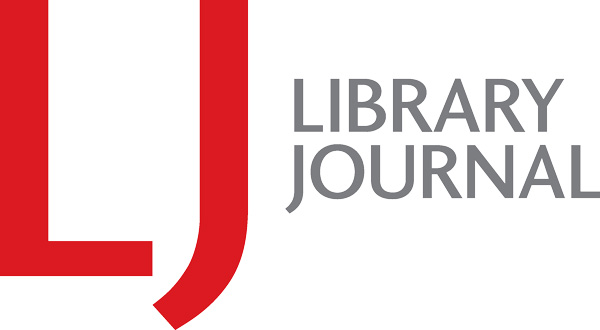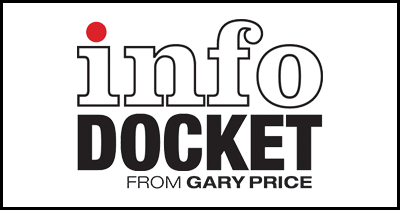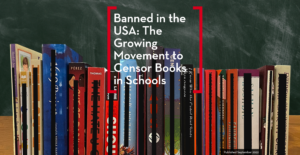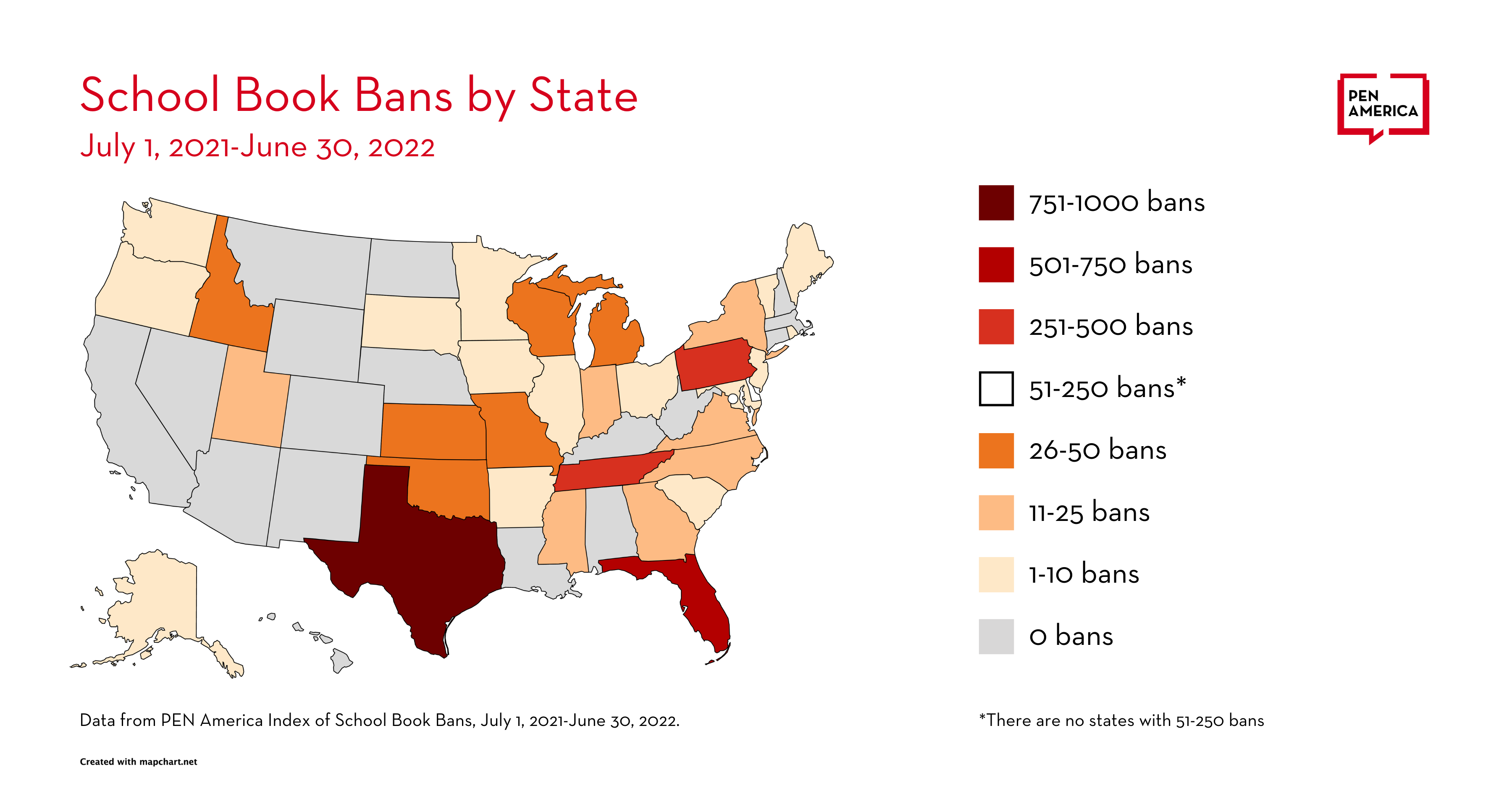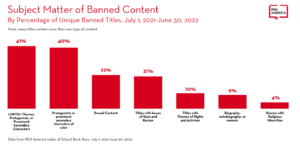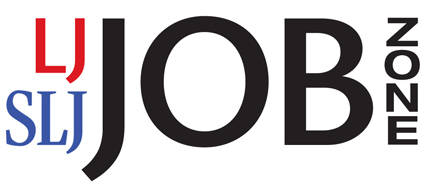“Banned in the USA: The Growing Movement to Censor Books in Schools”; New Report From PEN America Documents 2,500+ Book Bans Across 32 States During 2021-22 School Year & Tip Sheet For “Librarians Facing Harassment” Released
UPDATED POST: A Tip Sheet for Librarians Facing Harassment (via PEN America)
This guidance is intended to equip librarians with strategies to navigate online abuse. While this resource acknowledges the ways that online abuse can move offline, it is primarily focused on digital safety. For a discussion of physical safety in libraries, see: “We Need to Talk About Library Security” and Creating Safer Libraries. If you’re looking for helpful resources on physical safety, check out: Front Line Defenders Workbook on Security and CPJ’s Journalist Security Guide (especially chapter 9); Although these resources were designed for journalists and activists, the basics of physical safety are broadly applicable.
Direct to: Tip Sheet for Librarians Facing Harassment (via PEN America)
—End Update—
From PEN America:
Nearly 140 school districts in 32 states issued more than 2,500 book bans during the 2021-22 school year, according to Banned in the USA: The Growing Movement to Censor Books in Schools, released today by the free expression group PEN America. The report documents the rapid acceleration of book censorship nationwide, which now touches more than 5,000 individual schools enrolling a total of nearly 4 million students.
PEN America updated its Index of School Book Bans with new and sortable data on the most frequently banned titles and authors, as well as with an updated list of school districts and states that have issued the most bans. The data underscore the increasingly rapid pace at which whole categories of books — especially those featuring protagonists of color, dealing with issues of race, or highlighting LGBTQ+ characters and themes — are being pulled from shelves in classrooms and school libraries.
This edition of Banned in the USA also chronicles the emergence and influence of a growing constellation of groups involved in coordinated efforts to ban books. PEN America has identified at least 50 groups advocating for bans at the national, state, or local level. Many of the groups have local or regional chapters that collectively number at least 300. The vast majority of these groups have formed in the last year, and their members have made demanding censorship of books and ideas that they find objectionable in schools part of their mission. Parent and community groups advocating for book censorship have played either a direct or influential role in at least half of the bans enacted across the country during the 2021–22 school year.
[Clip]
This new research expands on the findings of PEN America’s groundbreaking April 2022 report on the proliferation of book bans, updating both the data and providing new detail for the entire 2021-2022 school year. It captures about 1,000 more book bans than had been uncovered by the first edition of Banned in the USA.
Among the report’s key findings:
- The updated Index of School Book Bans, covering the last school year, lists 2,532 instances of individual books being banned, affecting 1,648 unique book titles.
- A total of 674 banned titles (41 percent) explicitly address LGBTQ+ themes or have protagonists or prominent secondary characters who are LGBTQ+; 659 banned titles (40 percent) feature protagonists or prominent secondary characters of color; and 338 banned titles (21 percent) directly address issues of race and racism.
- The report estimates that at least 40 percent of bans listed in the Index are connected to political pressure or legislation designed to restrict teaching and learning.
- Texas ranked first among states with the most bans (801 in 22 districts), followed by Florida (566 in 21 districts) and Pennsylvania (457 in 11 districts).
The most frequently banned books were Gender Queer: A Memoir by Maia Kobabe (banned in 41 districts), followed by All Boys Aren’t Blue by George M. Johnson (banned in 29 districts) and Out of Darkness by Ashley Hope Pérez (banned in 24 districts).
The list of banned books also includes bestselling titles that are the basis of mainstream movies (The Hate U Give, Me and Earl and the Dying Girl), TV series (Thirteen Reasons Why, Looking for Alaska), and a Broadway show (The Kite Runner). The most banned authors include Nobel laureate Toni Morrison and winners of the Booker Prize, the Newbery Award, the Caldecott Medal, and the National Book Award for Young People’s Literature.
[Clip]
This report broadens PEN America’s portfolio of research on the spread of educational censorship in America’s schools. In August, PEN America released research establishing an alarming rise in proposed legislative restrictions on teaching and learning: State-based educational gag order proposals increased by 250% in 2022 compared to 2021.
PEN America defines a school book ban as any action taken against a book based on its content and as a result of parent or community challenges, administrative decisions, or in response to direct or threatened action by lawmakers or other governmental officials, that leads to a previously accessible book being either completely removed from availability to students, or where access to a book is restricted or diminished.
Direct to Complete News Release
Direct to Index of School Book Bans
Filed under: Awards, Data Files, Libraries, News, School Libraries
About Gary Price
Gary Price (gprice@gmail.com) is a librarian, writer, consultant, and frequent conference speaker based in the Washington D.C. metro area. He earned his MLIS degree from Wayne State University in Detroit. Price has won several awards including the SLA Innovations in Technology Award and Alumnus of the Year from the Wayne St. University Library and Information Science Program. From 2006-2009 he was Director of Online Information Services at Ask.com.
